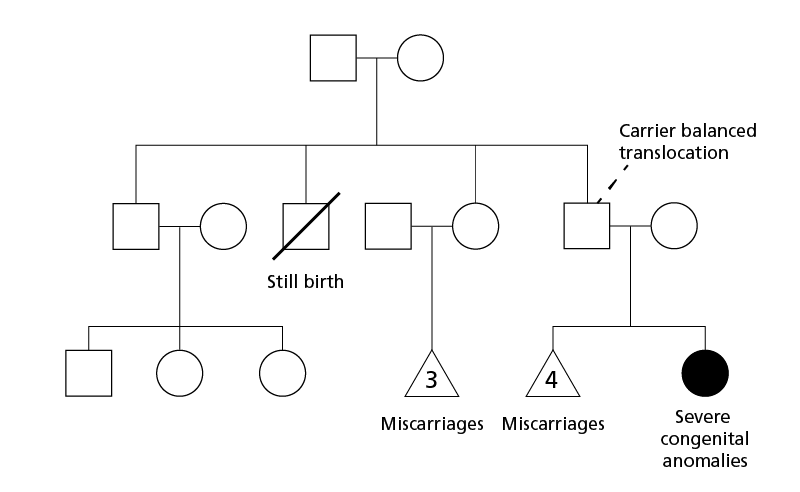Chromosomal conditions
A chromosomal condition is caused by changes to the chromosome number or structure.
What is a chromosomal condition?
Changes to the chromosome number or structure usually involve large regions of the genome, covering several genes. As a result, these genes have either more or less copies in each cell than usual, which can lead to different chromosomal conditions.
The exact condition depends on which chromosomes or parts of chromosomes are affected. For example, when part of chromosome 5 is missing, this results in cri-du-chat syndrome, and when part of chromosome 15 is missing, this leads to Prader-Willi syndrome.
Chromosomal conditions often result from errors during cell division, with most occurring during the development of gametes. It is important to note that the chromosome conditions recognised at birth represent only a small proportion of all chromosome conditions, as the vast majority result in early miscarriage.
Many chromosomal conditions present in families with no previous history and are due to a ‘de novo’ event.
Types of changes
Changes in the number of chromosomes
These are usually due to the presence of an additional chromosome, known as a trisomy. An example of this is Down syndrome, where there is an extra copy of chromosome number 21.
There may also be one fewer chromosome, which is termed monosomy, an example of which is Turner syndrome.
Structural changes to chromosomes
These include deletions or duplications of part of a chromosome (as seen with cri-du-chat syndrome), and translocations, where a part of one chromosome has swapped positions with the part of another chromosome (as seen with Emanuel syndrome).
In the case of translocations, if there is no net loss or gain of genetic material as a result of the translocation, this is known as a balanced translocation. Individuals who have a balanced translocation do not usually show any signs or symptoms as a result of this translocation, but are referred to as being a carrier of the balanced translocation.
If genetic material is lost or gained, this is called an unbalanced translocation. Carriers of balanced translocations may have children who have no translocation present, the same balanced translocation or an unbalanced translocation. The amount of genetic material that is gained or lost as a result of the unbalanced translocation, and the genes that are affected by this net gain or loss, will determine the severity of the chromosomal condition.
As shown in figure 1, features in a family history that may suggest the presence of a balanced translocation include:
- learning difficulties in family members;
- recurrent miscarriages where one partner has a balanced translocation;
- congenital abnormalities affecting multiple organ systems; and
- multiple cases in different generations.

Figure 1: Genetic family history suggesting the presence of a balanced translocation.
- There is a female individual with severe congenital anomalies.
- Her parents have had four previous miscarriages.
- An aunt of the affected individual has also had three miscarriages and an uncle was stillborn.
Key messages
- Chromosomal conditions are the result of changes to chromosome number or structure.
- Most chromosomal conditions are not inherited from a parent but are the result of ‘de novo’ variants.
- Balanced translocations may be passed from parent to child in the same form, or may become unbalanced in a child and result in a chromosomal condition.
Resources
For clinicians
- GeNotes: Visual communication aids for genomics conversations
- NHS England Genomics Education Programme: Genomics 101: Dominant, Recessive and Beyond
- Unique (Understanding Rare Chromosome and Gene Disorders)